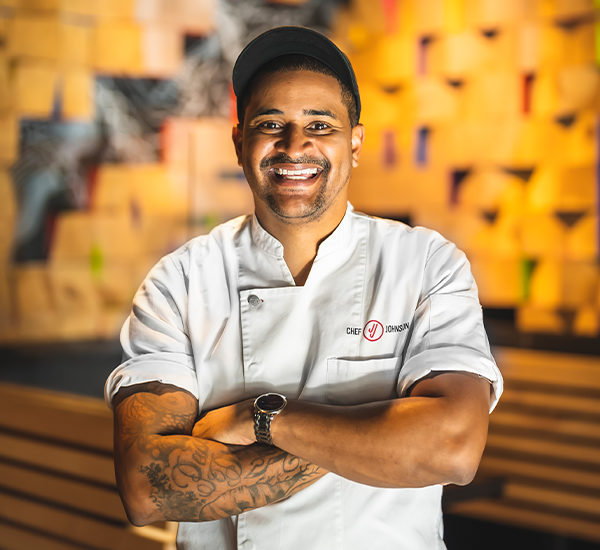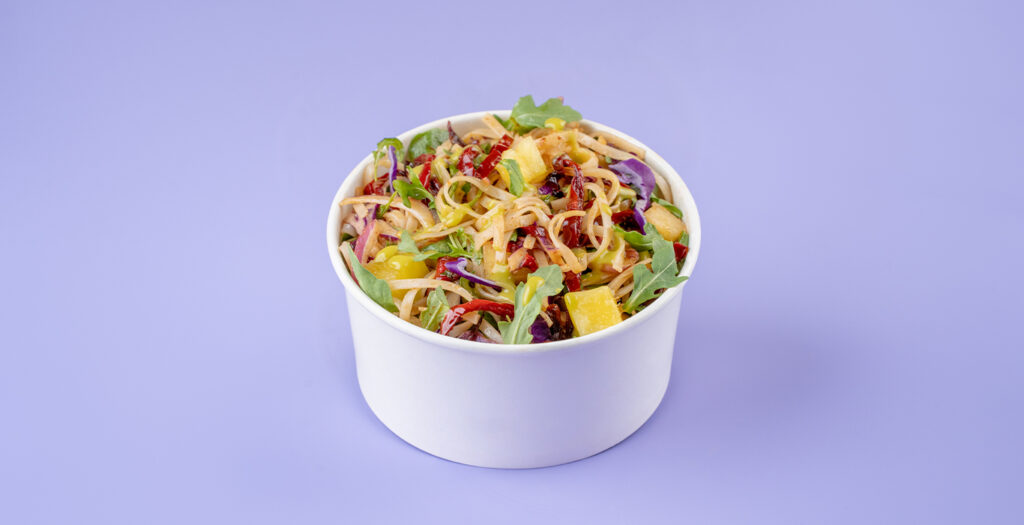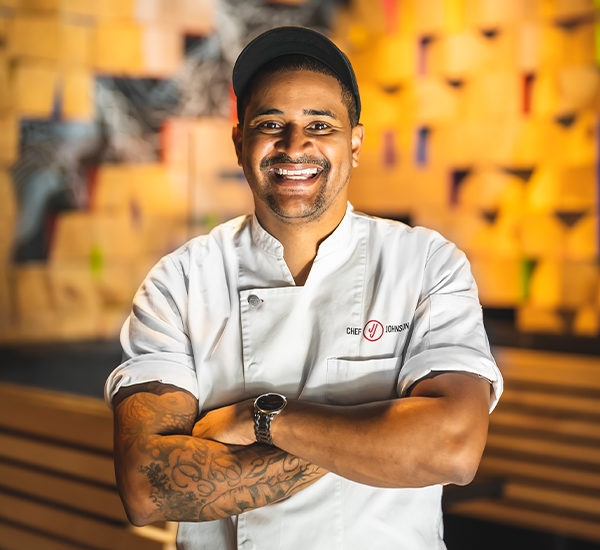Chef JJ Johnson knew from the age of seven that he wanted to be a chef.
“[My parents] kind of chuckled,” Johnson recalls. “But my dad, as an African American from the South, was a very big composer of ‘Don’t live life like you could have, should have, would have.’ So he said, ‘If you want to be a chef, go out and be a chef.’”
Inspired by his own family’s culinary traditions—and his roots in the American South, Puerto Rico and Barbados—that’s exactly what Johnson did. “I learned from my family that the best moments were around the dining room table,” he says. “They made it fun. My grandmother always made her own stocks. There was always loud music. Somebody was always dancing.”
Somebody was also always making rice. “The best rice memories I have as a kid were paella on the stovetop in a cast iron pan and a Puerto Rican dish called Asopao—my grandmother used to drink it out of a coffee cup,” says Johnson. “Then, when my grandmother passed away, I felt like boxed rice came into effect. My mom, as a working mother, made a lot of boxed rice, and we used to fight about her boxed rice as kids.”
Johnson’s relationship with rice was complicated. So in his early culinary school days, Johnson avoided cooking rice for as long as he could—until he started working as the chef de cuisine at Alexander Smalls’ Harlem restaurant The Cecil, where he took a deep dive into the food of the diaspora, discovering that in every culture, “rice was always in the forefront of the table.”
That idea forms the basis of Johnson’s international rice-bowl restaurant Fieldtrip, once a single location in Harlem that has now expanded to locations across New York. “There’s a lot of connectivity between different things,” Johnson says about Fieldtrip’s concept. “You might see Jollof rice in a Biryani-style bowl. You’re really on a field trip.”

Fieldtrip, in that way, fosters a sense of global community, but Johnson is also committed to fostering community more locally in Harlem and across New York City. Johnson asked himself: “Can I help change the makeup of the way communities eat, with a good-for-you spot?” And since 2019, he’s been giving back by donating meals (a ramped-up initiative during the pandemic) and partnering with local organizations to address food insecurity.
With Sweet July, Johnson shares an East Side Rice Noodle Salad recipe, which he says is a perfect meal for the warmer months. “I wanted something fresh, light and approachable as the summertime comes around,” he says. “And at one point in New York City, East Harlem was called Bengali Harlem, which is made up of a lot of different cultures. That’s a reflection of the salad.”
The salad, Johnson says, is also a great foundation for adding other ingredients or proteins like shrimp or salmon.
“I think it represents Fieldtrip’s versatility and who we are as a brand,” says Johnson. “How I like to play with flavors as a chef and represent rice as a very versatile ingredient.”
Get Johnson’s East Side Rice Noodle Salad recipe below.
Plus: Looking for the perfect wine to pair with this dish? Sweet July’s wine consultant Julia Coney suggests Picpoul de Pinet. Coney says, “This is a grape from the Languedoc region of France that should be more prevalent but isn’t. A refreshing white wine for a dish with a variety of flavors, such as herbs and citrus. At first, it may seem light in style, but its flavor is big in character.”

RECIPE:
JJ Johnson's East Side Rice Noodle Salad
INGREDIENTS
6 oz Rice Noodles
1 pt Arugula
2 oz Red cabbage
2 oz Red onion
2 oz Shredded carrot
2 oz Diced pineapple
4-5 Mint leaves torn
6-8 Cilantro leaves torn
3 oz Cilantro Vinaigrette
CILANTRO-MINT VINAIGRETTE
1 bushel Cilantro, leaves only
1 bushel Mint, leaves only
3 Limes, juice only
6 oz Champagne vinegar
1 Shallot, sliced
1 tbsp Dijon mustard
3 cups blended oil
Salt and pepper
INSTRUCTIONS
1. For Vinaigrette: Blend all ingredients together.
2. For Salad: Place all ingredients in a mixing bowl, add the vinaigrette, and toss.







